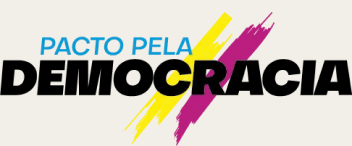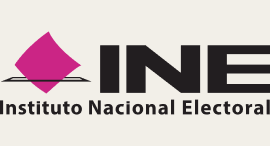Information and misinformation spread like wildfire on social media networks. While there are ways of tracking viral information on platforms like Facebook and Twitter, encrypted networks like WhatsApp, Viber and Telegram are often beyond the reach of investigation. Fact-checkers have started using tiplines to understand and address misinformation spreading in these networks. Tiplines are accounts on these platforms to which users are encouraged to send any potential misleading information they see.
In this blogpost, we look at the top requests received on WhatsApp tiplines of our partners in India and Brazil. The insights are based on a preliminary analysis of the most requested items on tiplines of two Braziilian and six Indian partners between April 1 and May 15, 2021. Our goal is to understand the major themes, topics and nature of fact-check requests received by fact-checkers on their tiplines and to compare content across regions for variations and overlaps. All items analyzed were requests in text and image formats. (Please note that not all requests are misinformation; while some viral messages are false, misleading and partly false, there are also messages which are true and those calling for action and advising caution.)
COVID related misinformation dominated tipline content received by Indian fact-checkers
Amid a busy election season in the country, India saw a surge in COVID-19 cases. While fact-checkers expected a surge in election related misinformation, the COVID-19 crisis resulted in the resurfacing of pieces of information and misinformation which were viral back in 2020, during the initial stages of the pandemic. The analysis of the top requests across Indian tiplines shows that home remedies for COVID-19, conspiracy theories around the disease and vaccine with a political undertone and misleading political narratives around the handling of the pandemic dominated tipline content. Right after the election results were declared the tiplines also received viral content on post-poll violence in the state of West Bengal. Here are examples of the top requests and content received on the tiplines. Please note again that many of these items may be false.
- Claims about autopsy conducted in Italy and Russia revealed that deaths were falsely attributed to COVID-19 when the real cause of the deaths were due to 5G radiation, an issue that governments are trying to cover up.
- Claims with home remedies for COVID-19 using honey, pepper and ginger developed by an Indian student and other other recommendations such as steam kills coronavirus in the nose and newspaper clipping claiming alum water to be useful for treating COVID-19
- Claims with warnings by medical and health bodies like the ICMR and WHO that the next 72-108 hours are crucial, alleged claim from a representative of Serum Institute of India discrediting COVID-19 and cautionary messages from leading doctors
- Claims in a nationalistic tone listing donations by corporates and individuals toward COVID-19 management funds
- Claim about hospital facilities of armed forces in India to have been dedicated to COVID-19 treatment for civilians
- Claims promoting alternative treatment for COVID-19 - such as homeopathic Aspidosperma as a substitute for a fall in oxygen levels in COVID-19 patients
- A call to install CCTV cameras in COVID-19 wards of Indian hospitals to monitor how hospitals are treating patients
- Anti -vaccination messages such as those warning women not to get vaccinated during menstruation and claims of vaccination of adults resulting in infertility
- Message to editors allegedly from employees of Times of India demanding the government be held accountable for the mismanagement of the COVID-19 crisis
- Message about lockdown restriction guidelines in Lucknow and other cities
- Claims about black fungus causing deaths in recovered COVID-19 patients and linking deaths of known figures such as journalist Rohit Sardana to this
- Image of a murdered woman shared as that of post-poll violence in West Bengal
- Alleged government document showing approval for oxygen plants to negate claims that government has been impervious to oxygen shortage for COVID-19 treatment
- Manipulated images of oxygen tanks bearing the logo of Reliance industries amid a oxygen crisis faced by hospitals
- Pictorial representation of the number of All India Institute Medical Science (AIIMS) set up under each Prime Minister
- Message along with a link to an article and quotes from doctors which say India has entered the third wave of the pandemic
Pró-Bolsonaro messages topped tipline content in Brazil
In the run up to the general election in 2022, political messages dominated tipline content among Brazilian partners. Amid a pandemic which has battered the country, viral content related to COVID-19 and its handling is intertwined with a strong political narrative and propaganda. Messages are heavily skewed towards supporting and glorifying President Bolsonaro’s government while slandering the opposition. There seems to be a deliberate attempt in creating panic and despair, cautioning people against the ghost of communism’s presencein the country and pointing to Bolsonaro as the only answer in these dire times. Though fewer in number, there are messages which are anti-Bolsonaro and on other topics such as vaccine hesitancy and the WhatsApp privacy policy update. Here are a few examples of the top themes taken from messages received on tiplines of Brazilian partners. Please note again that many of these items may be false.
- Allegations that media group Globo is exaggerating the grimness of the COVID situation in Brazil -
- Messages supposedly linking COVID-19 deaths and faulty vaccines to Governor João Doria, who may also run for office in the 2022 election.
- Posts seeking to discredit family members of victims of police brutality during illegal raids in the Rio de Janeiro favelas.
- A fake New York Times clipping showing huge gatherings in support of President Bolsonaro.
- Resurfacing message that the wife of revolutionist Che Guevara received retirement benefits under the administration of the Workers Party, leading opposition and socialist party in Brazil.
- Claims of leading journalists being paid for speaking against Bolsonaro
- Fake claim attributed to WHO endorsing the use of Ivermectin for COVID treatment, supporting Bolsonaro’e government strategy to distribute fake cures to COVID-19
- Claims of Bolsonaro paying people to protest against the Supreme Court and the Worker’s party
- Claims about the successful sourcing of ultrasound beds for cancer treatment under Bolsonaro in partnership with Israel
- A call to spread a message about WhatsApp having access to personal photos from users’ phones and financial fraud using WhatsApp facial recognition technology
- Claims of vaccines not providing the desired immunity even after two jabs, supporting Bolsonaro’s open distrust of its efficacy
- Posts undermining the work of municipal administrations in dealing with COVID-19 and giving credit to Bolsonaro administration for their good work
- Messages praising Bolsonaro’s astute move of setting up vaccine factories in Brazil, sourcing 5G technology of Huawei and giving orders to create a new constitutional court in Brazil
- Warning against hackers circulating ‘Mexico made’ virus on social media
- Messages disputing the claims that Bolsonaro administration blocked federal funding to states
- Conspiracy theories about how the spread of COVID-19 is linked to pharmaceutical companies associated with China, a claim Bolsonaro has made publicly
- Dubious facts and figures to endorse COVID-19 strategy of the Bolsonaro administration to buy large stocks of Hydroxychloroquine and Ivermectin.
Some preliminary insights from the analysis
The analysis was conducted on clusters of messages received at least five times on either six tiplines in India or two tiplines in Brazil. These included 235 messages requested over 3000 times and 75 messages requested around 1000 times, respectively. Not all examples mentioned in this blogpost had that many requests, but all of them were among the top items for the time period.
- The surge of COVID-19 related queries when India witnessed the second wave and the political messages in Brazil ahead of presidential elections show how content circulating on WhatsApp is an offshoot of what is in the news and the larger events at hand.However, there are also indications that content trending on WhatsApp is also ahead of the newscycle and a prelude to major incidents and events such as the push for Bolsonaro as president in the 2022 elections.
- Viral claims are often recycled and reappear on WhatsApp. This was witnessed in the second wave of COVID in India as home remedies and other COVID related claims, which were debunked earlier when the pandemic first hit India, reappeared this year during the second wave of the pandemic.
- The goodwill messages of asking people to take precautions and remain cautious of the pandemic are often linked to recent incidents of deaths of known public figures and unfortunate events to create a sense of urgency and fear.
- Not all messages received on tiplines are fact-checkable as they tend to be appeal to emotions, propaganda and voicing of biased opinions
- Visual representations are used in abundance to mislead users
- In our analysis, we saw many variations of the same messages—including claims being repeated in different languages. The hyperlocal nature of content, multiple languages and contextual tweaks to viral messages point to the need for robust contextual understanding and a constant look out for the different forms misinformation takes during episodes of events.
- The analysis also points to similar claims circulating across the two regions. For instance, alleged claims by the World Health Organization on cure for COVID, claims about heads of states managing the crisis successfully in India and Brazil, messages fueling distrust on media outlets such as Globo in Brazil and Times of India in India, the alleged claims of how 5G technology is responsible for the deaths and not COVID.
Methods: The data used for the analysis was prepared by Meedan’s research team using a new, state-of-the-art embedding model to group messages making similar claims across languages. We will be sharing the model and details of its creation in the next week. The contextual analysis and findings were written by program managers located in Brazil and India.
Privacy and data governance: The privacy of WhatsApp users is our top priority. This analysis was done on anonymous, aggregated data containing only the raw text of messages sent to the tiplines by users. The dataset had no information about the users whatsoever. The lists included in this blogpost are themes and paraphrases from clusters of messages. They do not directly duplicate the message content.
All data is owned by our partners. This blog post only includes data from partners who agreed to allow for anonymous, aggregate analysis of the messages sent to their tiplines.
We collaborated with 53 partner organizations worldwide to design and carry out our 2024 elections projects. We extend special gratitude to our lead partners in Brazil, Mexico and Pakistan, whose work we highlight in this essay.



The 2024 elections projects featured in here would not have been possible without the generous support of these funders.




Footnotes
References
Authors
Words by
Sneha Alexander is Program Manager for APAC at Meedan. She is a public policy graduate with work experiences as a data journalist and fact-checker in India. Sneha is a trainer in media literacy and fact-checking and has coordinated work related to the Ekta consortium in India.
Isabella Barroso leads Meedan’s journalism collaborations in Latin America and the Caribbean. Isabella is a Brazilian journalist, experienced technologist, digital rights activist, and specialist in intersectional feminist communities. She has a special interest in counter archives and community memory.








